Club Junkie
TaylorMade Hi-Toe 3 wedges review: Forgiving and versatile!
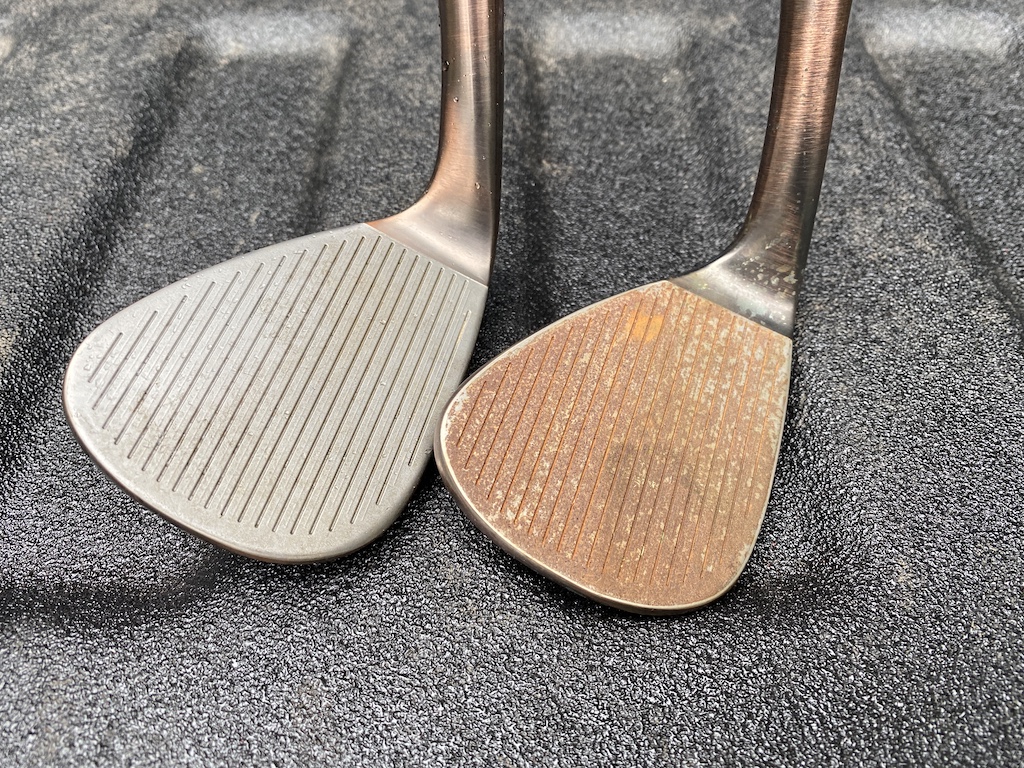
The third generation of TaylorMade’s Hi-Toe wedges is here and ready for any lie you can find. The Hi-Toe name has kind of taken over the whole class of wedges with the flared toe design but TaylorMade coined the name. You have probably seen Hi-Toe wedges in Tour players’ bags as well as in the bags of weekend players all over.

The new Hi-Toe 3 wedges are boasting some new technology to go with the classic “hi-toe” shape. TaylorMade updated the milled sole with a four-way camber design that will allow you to play the wedge open without the leading edge getting to high off the ground. The CG has also been adjusted to be a little higher for a lower trajectory but still being high spin. And speaking of spin, the new grooves take their tech from the Milled Grind 3 wedges, adding the raised Micro Rib to the full face grooves. Those Full Face grooves are also raw steel, just like the MG3 and Hi-Toe wedges before them. The raw steel face helps in wet conditions, keeping the spin you normally would have lost.


The new Hi-Toe 3 wedges look great out of the box with the bronze color that will wear as you play them. The 50 and 52 Hi-Toe 3 wedges are a little more traditional with less flair to the toe section and a standard set of grooves in the center of the club. The profile is a little larger compared to a TaylorMade Milled Grind 3 wedge but for some players that will just add to the confidence in the Hi-Toe 3. For me, a gap wedge is used primarily for full shots but I also use it for some pitch and chip shots around the green when there isn’t any hazards.
The Hi-Toe 3 really plays similar to my MG3 when it comes to spin into the green and feel. The Hi-Toe 3 is cast from 8620 carbon steel and has a soft feel to it on impact. The flight is a little lower and flatter than my MG3 gap wedge but the amount of release on the green seems to be very similar. Turf interaction is really good, the slightly wider sole help prevent digging for the steeper swing or if you play in soft conditions. The new camber on the sole also allows you to press the wedge forward and really get the leading edge down on right lies.

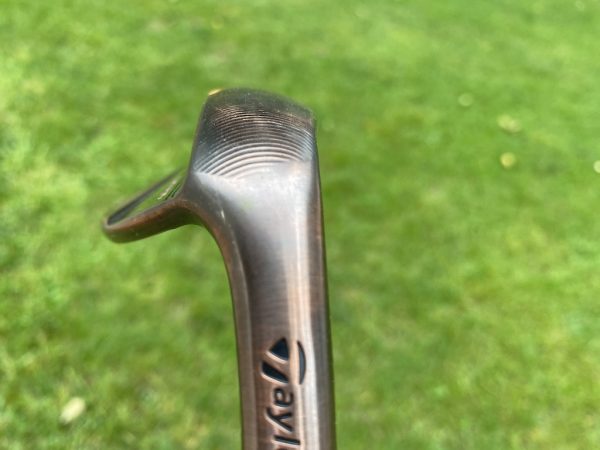
The sand and lob Hi-Toe 3 wedges are equally as versatile and do offer the full face grooves, so shots out off the toe carry a little more spin for consistent release. Shots for tight fairway lies check up immediately, and when the rough gets long, you still get consistent and predictable roll out.
The new sole design with four-way camber does allow you to open up the wedges and play higher lofted shots without the leading edge coming up too high. Opening the face in the rough, where the ball might be sitting up is still no issue and I never had any fear of the lob wedge sliding under the ball and it coming up way short.
The Hi-Toe 3 is great out of the sand and offers ample amount of float so even if your entry point into the bunker is a touch behind the ball, you will still get out of the trap. TaylorMade also rolled out three different bounce options for the 58 and 60, so depending on how you deliver the club and the course conditions you can match up your lob wedge perfectly.


If you are on the search for wedges that can give you some added forgiveness while being versatile, the TaylorMade Hi-Toe 3 are well worth a demo. Check out the full review of the Hi-Toe 3 wedges on my Club Junkie podcast, on all streaming platforms. Just search GolfWRX Radio.
- LIKE34
- LEGIT6
- WOW4
- LOL0
- IDHT0
- FLOP1
- OB1
- SHANK2
Club Junkie
Club Junkie Review: Cobra’s new King Tour irons

The Cobra King Tour irons have been proven on the PGA Tour already and will be in bags of better amateur players this year. The previous King Tour MIM irons were very underrated and offered great precision with a solid shape that many players liked. Cobra went away from the Metal Injection Molded construction and went with a five-step forging process for soft and solid feel.
Make sure to check out the full podcast review at the links below and search GolfWRX Radio on every podcast platform.
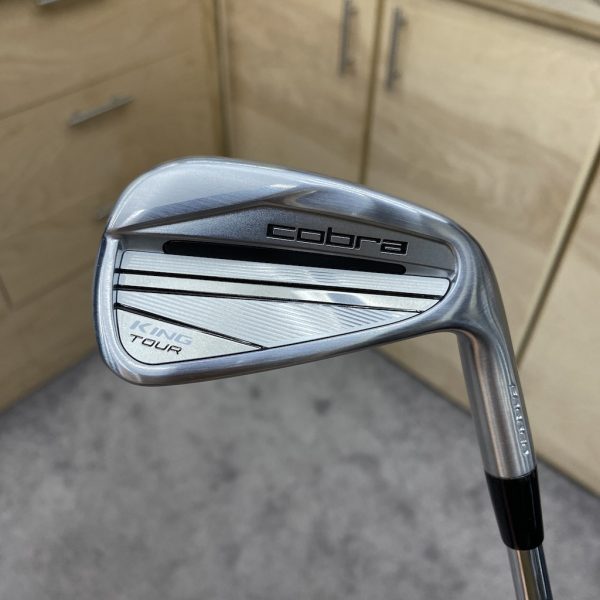

I was a big fan of the previous Tour MIM irons and played them in rotation throughout the last two years. Out of the box, I was impressed with the more simple and clean look of the badging on the new King Tour. Badging is mostly silver with just small black accents that should appeal to even the pickiest golfers. I didn’t notice the shorter blade length in the new irons but did notice that the leading edge is just slightly more rounded. Topline is thin, but not razor thin, but still has enough there to give you the confidence that you don’t have to hit it on the dead center every shot.
Feel is solid and soft with just a slight click to the thud on well struck shots while mishits are met with a little more sound and vibration to the hands.

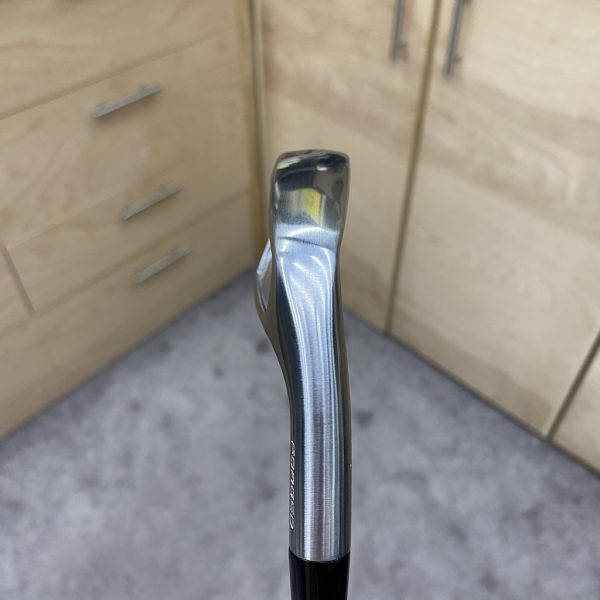
These King Tour irons are built to be cannons and place more emphasis on consistent and precise shots. I also felt like the new irons launch easily and maybe a touch higher than some irons in the same category.
My launch monitor showed my 7 iron with an average launch angle of 22 degrees and spin right around 5,800 with a Project X LZ 6.0 stock shaft. Ball speed isn’t the ultimate focus of this iron but it did well with an average around 108mph and the iron was able to keep the speed up well when you didn’t strike the center. You will still see a drop off in speed and distance when you miss the center, but you don’t have to be Navy SEAL sniper accurate on the face to achieve a good shot. Dispersion was very tight, and while there are bigger irons with more forgiveness, this players cavity still allows good playability when you aren’t bringing your A-plus game to the course.
Cobra lists the King Tour as an iron for a Tour level player up to a 7 handicap and I think this iron could see the bags of more golfers than that. I am a 9.4 handicap, and I felt more than comfortable playing this iron even on less than perfect days.
- LIKE14
- LEGIT4
- WOW2
- LOL0
- IDHT0
- FLOP0
- OB0
- SHANK0
Club Junkie
Club Junkie Review: TaylorMade Stealth 2 drivers

The TaylorMade Stealth 2 drivers still have red carbon faces, but that isn’t the only carbon fiber in the head. The heads now only have titanium to support the face and connect the shaft. The rest of the driver head is made from carbon fiber and carbon composite. This allows the talented TaylorMade engineers to move more weight around and add more forgiveness to a very long driver.
Like last year there are three flavors to cover every driver need: Stealth 2, Stealth 2 Plus, and the Stealth 2 HD.
For a more detailed review, please take a listen to the Club Junkie below or on any podcast platform. Just search GolfWRX Radio.
Stealth 2 Plus
I typically like the bigger and more forgiving drivers, but this ended up being the one I hit the best. My miss is a low-left hook that comes from some swing flaws, and it was a shot I saw too many times with last year’s Stealth. My first time on the range, I noticed that shot would actually launch a little higher, stay in the air better, and not go as hard left.
The Plus might be the lowest-launching of the three, but it is still easy to elevate off the tee and produces flat, boring drives. I averaged a launch of 11.1 degrees in a 10.5-degree head with a Fujikura Ventus TR Red shaft. Spin was also the lowest and averaged 2,874 RPM, but the bigger part of that number is how the spin variation from center strikes to off center is very low. Only a few hundred RPM separated the highest and lowest spinning shots.
The Plus also offered the least draw out of the group with a very straight ball flight and even a few shots that went a hair to the right.

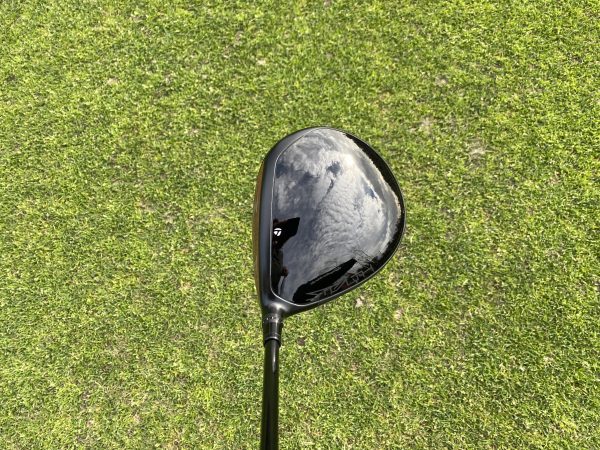

Stealth 2
This the bread-and-butter driver option offering hefty amounts of forgiveness and is easy to launch while offering low spin. This is the model that should launch and spin in-between the other two, but it actually ended up being the lowest launching for me. It wasn’t by much, but I had an average launch of 10.2 degrees with a 10.5-degree head and the same shaft as the Stealth 2 Plus. The spin was a little higher but only by a very small margin, as I averaged 2,917 RPMs.
For most players the nice thing about the Stealth 2 is that it seems a little easier to square up and turn over at impact. I saw a little more draw in the shots and the starting line was more straight to just slightly left. Like the Plus, I was pleased with the face that my miss off the high toe launched a little higher and stayed in the air a bit longer for a more playable shot.

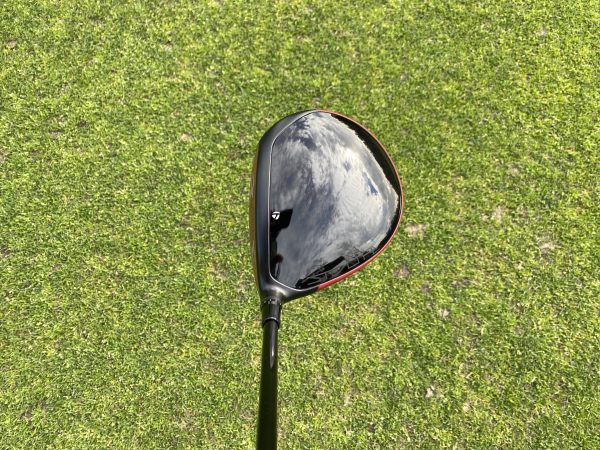

Stealth 2 HD
I was actually the most excited to try this head because of how it looks. Most higher launching, draw-bias drivers sit very closed, and I don’t love that look. First time I set the HD down I was impressed that it looked square and a little larger, mostly from the visible red Carbon Composite Ring around the back. The HD also has a slightly shorter hosel that makes the driver play 1/4 inch shorter than the other two.
The HD did launch the highest at 11.5 degrees and spun the most, 3,105 RPM, out of the three Stealth 2 models. Those numbers still don’t sound like a high launching, spinny driver to me. The HD was the easiest of the Stealth models to turn over and really took away any shots to the right and any fade that I could have hit with the Plus. Off-center hits held up with solid ball speed and the added forgiveness in the head kept most shots online.
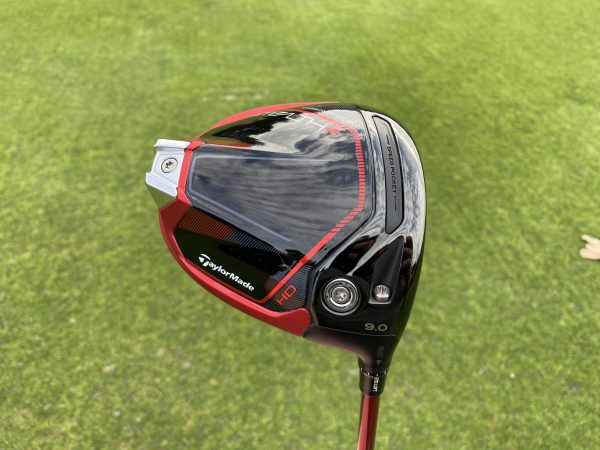


TaylorMade’s Stealth 2 line of drivers mixes distance with added forgiveness this year to really help golfers of all levels. Each model can cover a wide array of golfer abilities and the better players will still like the confident look from address. If you are looking to add a new driver to your bag this year, the Stealth 2 line is worth swinging.
- LIKE19
- LEGIT1
- WOW4
- LOL2
- IDHT0
- FLOP2
- OB1
- SHANK3
Club Junkie
Club Junkie Review: Vega Golf VDC and Mizar Tour irons

You may not have heard of Vega Golf, but the company has been making golf clubs for quite some time in Japan. Vega is known for their expertise in forging metal and the great feel their irons offer. This week I get to talk about different irons in their lineup and how they performed for me. For a more detailed review, please take a listen to the Club Junkie below or on any podcast platform. Just search GolfWRX Radio.
Star Line: Mizar Tour
The Mizar Tour is a compact players distance iron that is packed with technology. Wheres a lot of multi-piece irons just have a forged face, the entire body of the Mizar Tour is forged from S25c steel. The face is crafted from a high strength maraging steel and only 3.5mm thick for added ball speed.
Out of the box, the Mizar Tour look good with a lightly satin chrome finish and small black badge in the cavity. The irons look compact, with a thin sole, and you would not think it is made from multiple pieces. If you are a fan of less offset, the Mizar Tour is going to fit your eye really well as even the long irons have almost none. These irons might have the lest amount of offset I have seen in a retail iron that isn’t a blade. The shape is a little softer and more rounded than the VDC irons.
Hitting balls with the Mizar Tour is really pleasant, and as you would think, you get a very soft feel upon impact. Even off center shots have a good feel to them but with a little added vibration for feedback. The ball flight is mid/high and the irons are easy to launch off the turf. The long irons, like the 4, are a little intimidating because of the compact look and almost no offset. The longer irons are still pretty easy to launch and much more playable than you would expect.
The nice thing about the Mizar Tour is that when you miss that thin face allows you to still get minimal drop off in distance. Shots also stayed online better than I expected with these irons. Heel strikes and shots low on the face carried very well and online where you noticed a little more distance loss when you struck the ball on the toe. I love the players distance irons that allow players like myself to play a more compact iron without sacrificing performance.




Classic Line: VDC
The VDC shows off its fantastic milling work on the back side with dual cavities that allow Vega to adjust the CG higher on the irons for the perfect players cavity set. The irons look great with a slightly more square toe and edgier look to them than the Mizar line. The blade length is a little longer from heel to toe while still giving a traditional compact look. Faces on all the irons are micro-milled as well for precision shots and distance control. The sole is narrow and has a pre-worn leading edge for improved turf interaction. These irons again have very little offset, with maybe just a hair more than the Mizar set. Overall the shape is very proportionate and discerning players should be confident standing over them.
Feel on the VDC irons is wildly soft, making two-piece range balls feel soft. Shots struck in the center are met with a solid “thud” sound and that feeling of did you even make contact with the ball. While the face didn’t give you the sense of ball exploding off the face, the VDC provided solid distance and an ability to work the ball in any direction. The ball flight was more mid launching with a noticeably flatter trajectory than the Mizar.
If you are a player that likes to shape shots, the VDC will allow you to not only go right and left, but also allow you to pick your trajectory and really dial in those touch shots. The VDC is a little more demanding when it comes to forgiveness, and you will notice more of a distance drop off when you get away from the center of the face. The shots hit near the heel kept that solid and soft feel where the shots out on the toe and low are met with a little added vibration and click. Nothing is harsh, even in the cold weather I was hitting in and that responsiveness should help those feel players.
The VDC is a high-end players cavity iron set that offers great, soft feel that you would expect with precision shot making.




Overall, the Vega line of irons are high performance and great feeling. You can go down the Classic Line for traditional shapes and buttery soft feel or take the Star Line for technology packed irons with added firepower. Either way you go, there is probably a Vega iron that fits your game.
- LIKE18
- LEGIT6
- WOW10
- LOL2
- IDHT0
- FLOP1
- OB1
- SHANK4
-

 Opinion & Analysis2 weeks ago
Opinion & Analysis2 weeks agoThe Wedge Guy: Golf mastery begins with your wedge game
-

 19th Hole1 week ago
19th Hole1 week agoTour pro calls Anthony Kim a ‘f*****g idiot’ following Instagram comeback post
-

 19th Hole1 week ago
19th Hole1 week agoThis Rory McIlroy post-round ‘The Match’ moment is going viral…but all is likely not what it seems
-

 19th Hole1 week ago
19th Hole1 week agoAnthony Kim’s speculated LIV Golf sign-on fee may surprise you
-

 19th Hole3 weeks ago
19th Hole3 weeks ago6-time Euro Tour champ says Patrick Cantlay ‘should be nailed with a huge fine’ over Genesis incident
-

 Whats in the Bag2 days ago
Whats in the Bag2 days agoScottie Scheffler WITB 2024 (March)
-
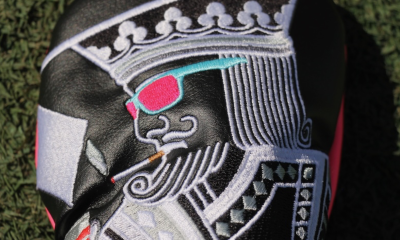
 Tour Photo Galleries3 days ago
Tour Photo Galleries3 days agoPhotos from the 2024 Arnold Palmer Invitational
-

 Whats in the Bag1 week ago
Whats in the Bag1 week agoAnthony Kim WITB 2024 (February)

























GLEN OCK
Aug 28, 2022 at 12:31 am
Hey Knutson
Knowing that you played the Cleveland full face last year. How do they compare? Mainly the look at address. Is the high toe have a more obtrusive look compared to the full face?
Thanks
Mo
Aug 26, 2022 at 5:00 pm
My bag is all Ping except for TM Hi Toe 50 56 & 60 (Big Foot). Love these wedges.
Brian Knudson
Aug 29, 2022 at 5:00 pm
Who cares
GLEN OCK
Aug 30, 2022 at 9:26 am
Hey Knutson
How does this compare in terms of look at address to the full face that you gamed alot last year?